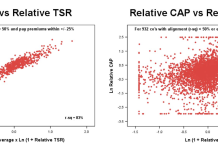Laurent Colombant, Continuous Controls and Fraud Manager at SAS, explores the role of continuous monitoring systems in helping organisations resolve procurement fraud
Procurement fraud exists in many organisations across the globe, as much as employers may not like to admit it. In fact, PwC places it as one of the most widespread economic crimes globally – and it shows no signs of slowing. Nobody likes to think of their employees stealing from them, and this has meant it’s an issue which often flies under the radar.
Malpractice in the onboarding of vendors, fraudulent payments activity, conflicts of interest – these are just a few examples of procurement fraud, and the scale of the problem is hard to grasp precisely because it takes so many different forms. Manual detection methods can be ineffective, unveiling just a small fraction of cases or identifying them only when it’s too late – for a problem so severe, businesses need a combination of advanced analytical methods to keep ahead.
Awareness of the problem is thankfully on the rise, particularly in public services where funds lost through fraud pulls desperately needed resources from other departments. In response, organisations are beginning to implement technologies like continuous monitoring to uncover instances of fraudulent activity.
Continuous monitoring solutions in a nutshell
Continuous monitoring solutions pull millions of records from back-office systems, including purchase orders, purchase requests, invoices, payments and other accounts payable data, and supplier data. After extracting the data, they apply AI to cleanse it. This increases detection quality without asking legacy systems for impossible data clean-ups.
The system can enhance the data by drawing on external sources, such as company registers, information about politically exposed people and transparency indexes. Then it processes the data using alert generation processes based on mathematical algorithms and models, such as clustering and link analysis.
Depending on the industry and the company needs, organisations can use analytics to check for bid-rigging, duplicate invoices, travel expenses, returns, fidelity cards, subscriptions and more.
The solutions in action
Companies have to follow rules when finding new vendors and exercise due diligence. These rules are often based on answers to questionnaires and can be difficult to manage because of the number of vendors or the difficulty of verifying information. Automated solutions can sift through supplier master files looking for high-risk managers or links with risky individuals that warrant additional due diligence.
A recent survey suggested that travel and expenses are the second-most important area of procurement fraud. In total, 35% of 850 companies interviewed had experienced this. To reduce bribery and corruption, continuous monitoring can be used to check gifts, hotels, venues, events and hosting expenses and detect anomalous behaviour.
Points of sale in retail and subscriptions in telco are also rife with fake returns. This outright fraud leads to massive losses but can be controlled by continuous monitoring to reduce exposure.
Organisations also struggle with data quality issues. These may be the result of errors but can also be indicative of fraud. Rapid changes of address for suppliers, for example, could show a recurring error, a start-up that often changes offices or a ghost vendor avoiding controls.
Making manual detection a thing of the past
Organisations in both the public and private sectors have a duty to ensure that all payments are legitimate. This is about being able to provide a relationship of trust, whether it’s to shareholders or the public – any breach of this trust can have severe reputational and financial consequences. By using advanced analytics to detect and prevent instances of procurement fraud, organisations can ensure that resources are used much more effectively and for the purposes intended.
A data-driven solution helps by providing compliance teams with real-time information needed to prevent funds from falling into the wrong hands. Here, the systems help by pre-emptively detecting signs of fraudulent relationships between employees and third parties, along with any potential collusion. In this sense, continuous monitoring solutions are leagues apart from the traditional manual techniques, able to sift through vast quantities of documents to identify any illegalities.
Auditors are now having to review billions of pounds worth of transactions each year, and this is only rising. With this in mind, it’s no wonder that procurement fraud has managed to become so widespread. AI has brought in transformative change to the job, helping to proactively detect fraud much sooner than any manual processes. Together, the democratisation of data, improvements in cloud computing power and advances in AI-enabled technologies are helping us make insider collusion a thing of the past.











